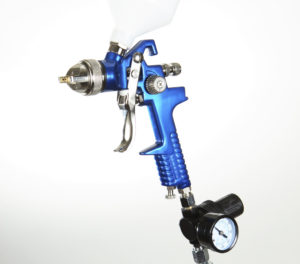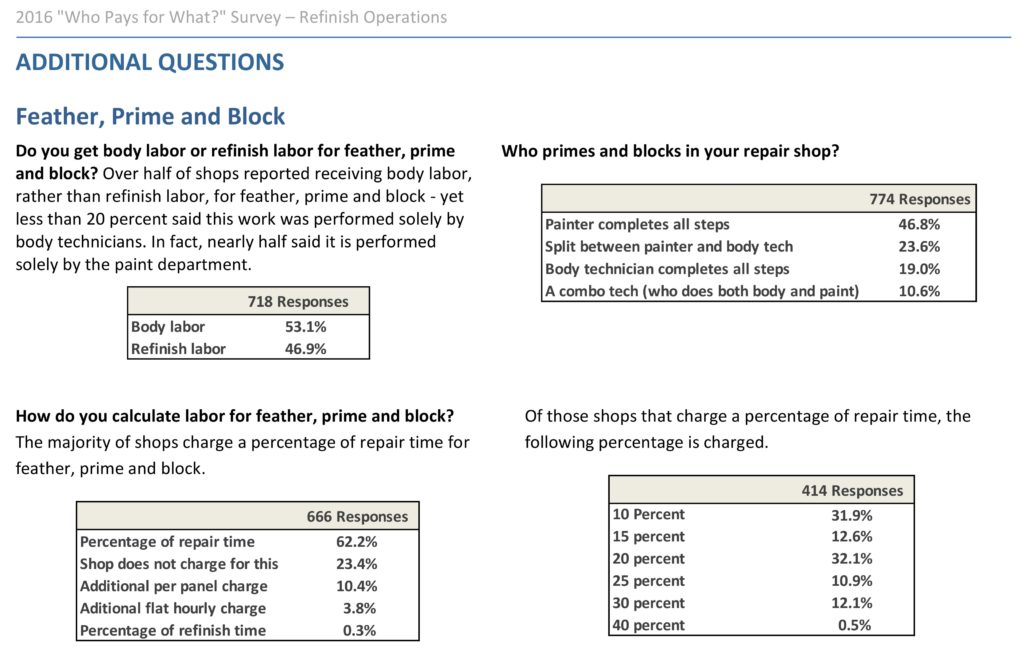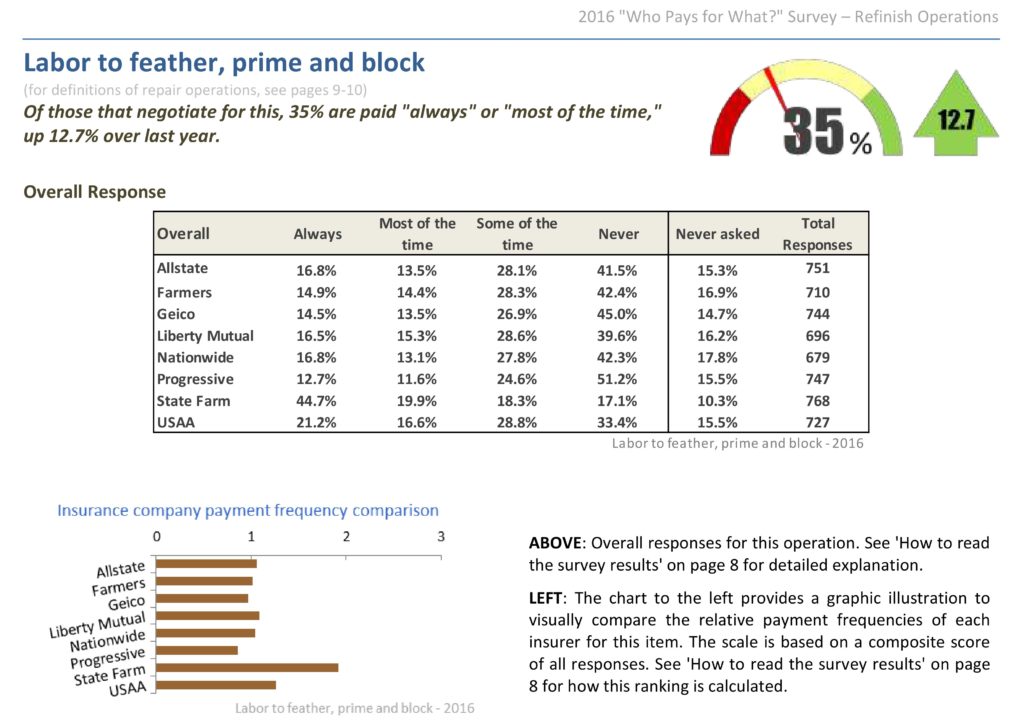
‘Who Pays for What?’: Shops might have wrong person, labor rate handling feather, prime and block
By onBusiness Practices | Education | Insurance | Market Trends | Repair Operations
Even when a shop asks and the insurer pays for feather, prime and block, it might involve the wrong labor rate for the wrong technician, the 2016 refinish “Who Pays for What?” survey found.
All three major estimating services declare that feather, prime and block is a refinish operation, according to the Database Enhancement Gateway, yet shops frequently have a body technician paid at a body rate handling the work, the research found.
Results were released May 17 for the Collision Advice-CRASH Network survey, and unlike other “Who Pays for What?” studies, the data is available for free to all shops. (Get it here.)
More than half of the hundreds of shops which responded to additional feather, prime and block questions received body labor for feather, prime and block, even though just 19 percent solely used body technicians for the work, the survey found. Another 10.6 percent used techs which perform both body and paint work.

Nearly 47 percent of the time, a painter performed every element of the work, and nearly 24 percent of shops described splitting the tasks between the body and paint departments.
“It needs to be a nonincluded refinish operation,” Collision Advice President Mike Anderson said.
Technically, a body technician could perform all three elements of the feather, prime and block process — but they might need to be certified under the Environmental Protection Agency’s Rule 6H requirement. If they’re not, then a shop might be out of compliance on the priming and make the feds mad, according to Anderson.
In discussing the feather, prime and block findings and the body/paint department distinction, Anderson also observed that manufacturers say not to skip more than two grit grades.
DuPont says as much in a 2011 guide provided by Collision Advice, and it and 3M have noted that all three estimating services observe that the process typically lives in the space between a body technician getting the panel to 150 grit and a new, undamaged panel.
“The majority of abrasive manufacturers state that you should NOT jump more than two grit sizes. So, if bodywork ends at 150 grit and refinish begins at 320 grit, the technician would need to use 150-180 -220 – 240 – 280 – 320 grits,” DuPont wrote.
Overall, 35 percent of shops seeking payment for feather, prime and block work from an insurer received it in some form “always” or “most of the time,” though at least this grew by 12.7 percent over the prior year’s results. Not all shops ask — or know to ask — for the work.
State Farm blows the other insurers out of the water on this one, “always” or “most of the time” paying shops seeking compensation more than 64 percent of the time. Next up is USAA, which typically or always picks up the check less than 38 percent of the time.
More information:
“Who Pays for What?” survey page
CRASH Network
“Results of refinish-related “Who Pays for What?” survey available online for free”
Collision Advice-CRASH Network, May 17, 2016
“Collision Repair Campaign to Reduce Air Toxics” page
Environmental Protection Agency
Images:
A high-volume, low-pressure spray gun is pictured here. (Paul Morton/iStock)
Even when a shop asks and the insurer pays for feather, prime and block, it might involve the wrong labor rate for the wrong technician, the 2016 refinish “Who Pays for What?” survey found. (Provided by Collision Advice-CRASH Network)
Overall, 35 percent of shops seeking payment for feather, prime and block from an insurer received it in some form “always” or “most of the time,” though at least this grew by 12.7 percent over the prior year’s results. Not all shops ask — or know to ask — for the work, a Collision Advice-CRASH Network “Who Pays for What?” survey found. (Provided by Collision Advice, CRASH Network)

